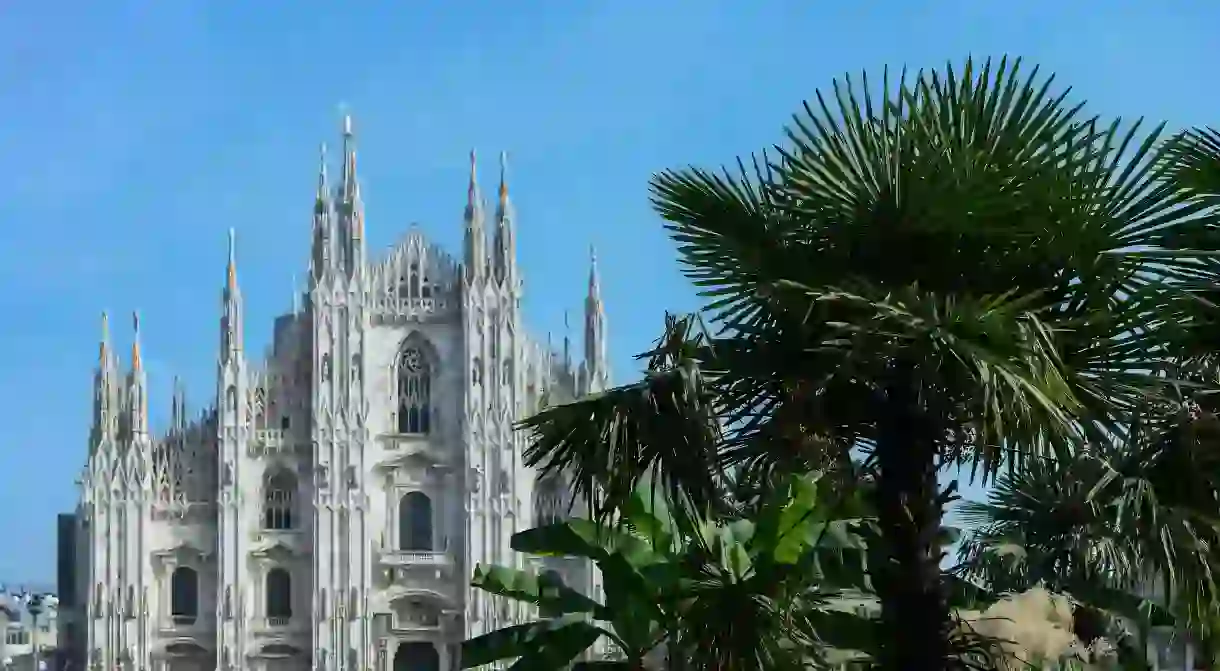The Top 10 Free Things To Do in Milan

When you think of Milan, fashion and finance probably pop into your head. However, whether or not you’re a fashionista or investment banker, there are plenty of things to do and see in this northern Italian city that won’t break the bank. From staying at the city’s cheapest hotels to finding free things to do, it’s easy to see Milan on the scantest of budgets.
Il Duomo di Milano
Building, Cathedral, Church

Galleria Vittorio Emanuele II
Shopping Mall

Parco Sempione
Park

Castello Sforzesco
Historical Landmark

Basilica di Sant’Ambrogio
Church, Monastery

Not only is this basilica the heart of Milan’s spiritual life, it’s also a homage to the much-admired fourth-century bishop of Milan. Saint Ambrose was a Roman governor who was made a bishop by popular vote back in AD 374, and although he refused the prestigious appointment at first, he was pressed into acceptance of the role, upon which he gave up all of his lands to support the poor. Now the patron saint of Milan, his remains are interred within a crypt in the basilica. Take a guided tour of the premises to learn more about this bishop and saint, or wander around at your own pace (for free) to marvel at the dazzling mosaics, which mount the otherwise minimalist halls of this red-brick cathedral.
Orto Botanico di Brera
Botanical Garden

For another tranquil retreat away from the bustling crowds of Milan, visit the local botanical garden. Tucked away up a private street and just a short walk from the Duomo or Parco Sempione, the Orto Botanico of Brera is a leafy oasis that was once a scientific institution. The 18th-century garden was designed to help educate medical and pharmacy students, as well as being used to grow medicinal plants. Today, it’s a beautifully maintained attraction for plant lovers and those looking to take a break from life. Find one of the many benches dotted around the grounds and relax until you’re ready to face the outside world again.
Free dinner in Navigli
Bar, Italian

They say there’s no such thing as a free lunch; however, they clearly haven’t been to Milan. Among the most famous areas of Milan is Navigli, known for its picturesque canals, hip bars, restaurants and the cultural phenomenon, aperitivo. Strictly speaking, aperitivo means a pre-meal drink, but here in Navigli it’s also code for ‘free dinner’. Purchase any beverage at one of the many canal-side bars around sunset (look for a buffet table inside, and you’ll know you’ve arrived), and you’ll be treated to an all-you-can-eat treat. Each of the bars has unique specialities, but you’ll usually find cold cuts, bruschetta, bread, cheeses and salads. Sip your drink as slowly as you can manage, and you can spend a happy evening munching away for free while you watch the world go by.
Cimitero Monumentale di Milano
Building, Cemetery

In case the name didn’t give it away, Cimitero Monumentale is a giant cemetery. Covering over 25 hectares (62 acres), it’s the second-largest cemetery in Milan, but definitely its most captivating. Boasting over 15,000 statues, the graveyard is also home to some of Milan’s most famous buildings, including the Famedio (or Pantheon), which is the final resting place of some of the city’s most legendary writers and politicians. Wandering through the laneways of graves is a unique, albeit slightly spooky, experience – you’ll be spellbound by some of the most artistic and decorative tombs in Italy.
Leonardo’s Horse
Historical Landmark

Unlike The Last Supper (for which tickets must be bought up to four months in advance), you can check out this Da Vinci masterpiece for free at any time of the year. Leonardo’s Horse, also known as Gran Cavallo, was commissioned in 1482 by Ludovico il Moro, who later became the duke of Milan. Some seven metres (24 feet) long, the sculpture is enormous and imposing. While Da Vinci never finished the statue, only designing it in clay, his plans were later used to forge the monument in a much more durable bronze.
Take a street-art tour
Art Gallery

Milan is thought to be the birthplace of fascism, and so it’s not surprising that an anarchic underground movement is also deeply rooted in the city. Graffiti is one of the oldest forms of street art and an inherently rebellious anti-establishment form of expression, which has a rich history in Milan. All over the city, you’ll find both large and discreet artistic installations, from huge building-side murals to tiny, decorated manhole coverings. For a concentrated burst of creative statements, visit the Leoncavallo area. In this public space, which plays host to everything from music events to protests and community gatherings, you’ll find wall paintings from some famous artists, including MR BLOB. Afterwards, catch a tram or bus to the Isola neighbourhood for more subtle yet equally striking pieces.













